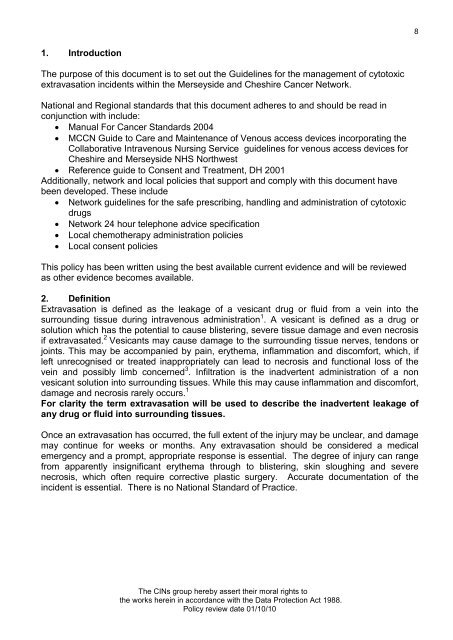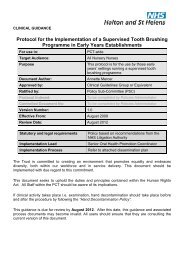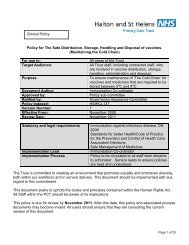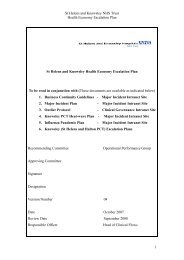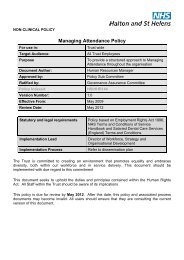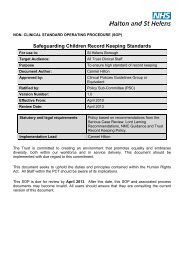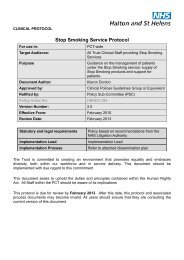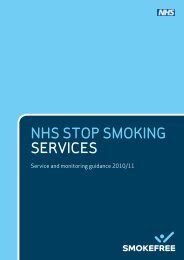Collaborative Intravenous Nursing Service (CINS) Guidelines
Collaborative Intravenous Nursing Service (CINS) Guidelines
Collaborative Intravenous Nursing Service (CINS) Guidelines
- No tags were found...
You also want an ePaper? Increase the reach of your titles
YUMPU automatically turns print PDFs into web optimized ePapers that Google loves.
81. IntroductionThe purpose of this document is to set out the <strong>Guidelines</strong> for the management of cytotoxicextravasation incidents within the Merseyside and Cheshire Cancer Network.National and Regional standards that this document adheres to and should be read inconjunction with include:• Manual For Cancer Standards 2004• MCCN Guide to Care and Maintenance of Venous access devices incorporating the<strong>Collaborative</strong> <strong>Intravenous</strong> <strong>Nursing</strong> <strong>Service</strong> guidelines for venous access devices forCheshire and Merseyside NHS Northwest• Reference guide to Consent and Treatment, DH 2001Additionally, network and local policies that support and comply with this document havebeen developed. These include• Network guidelines for the safe prescribing, handling and administration of cytotoxicdrugs• Network 24 hour telephone advice specification• Local chemotherapy administration policies• Local consent policiesThis policy has been written using the best available current evidence and will be reviewedas other evidence becomes available.2. DefinitionExtravasation is defined as the leakage of a vesicant drug or fluid from a vein into thesurrounding tissue during intravenous administration 1 . A vesicant is defined as a drug orsolution which has the potential to cause blistering, severe tissue damage and even necrosisif extravasated. 2 Vesicants may cause damage to the surrounding tissue nerves, tendons orjoints. This may be accompanied by pain, erythema, inflammation and discomfort, which, ifleft unrecognised or treated inappropriately can lead to necrosis and functional loss of thevein and possibly limb concerned 3 . Infiltration is the inadvertent administration of a nonvesicant solution into surrounding tissues. While this may cause inflammation and discomfort,damage and necrosis rarely occurs. 1For clarity the term extravasation will be used to describe the inadvertent leakage ofany drug or fluid into surrounding tissues.Once an extravasation has occurred, the full extent of the injury may be unclear, and damagemay continue for weeks or months. Any extravasation should be considered a medicalemergency and a prompt, appropriate response is essential. The degree of injury can rangefrom apparently insignificant erythema through to blistering, skin sloughing and severenecrosis, which often require corrective plastic surgery. Accurate documentation of theincident is essential. There is no National Standard of Practice.The CINs group hereby assert their moral rights tothe works herein in accordance with the Data Protection Act 1988.Policy review date 01/10/10


